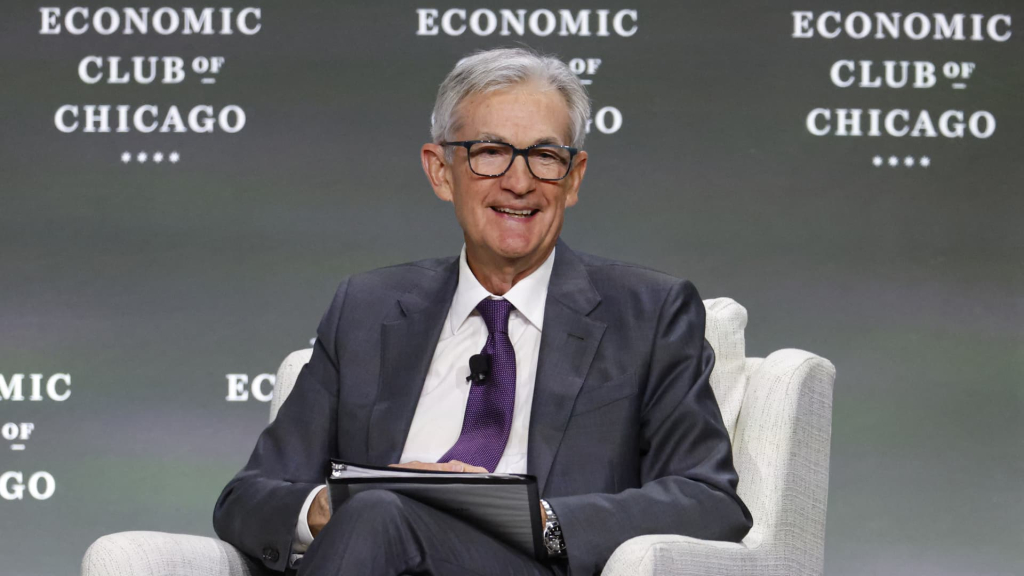The Federal Reserve is preparing for an important policy meeting on Wednesday, amid strong incentives to maintain the status quo.
Complications from President Donald Trump’s tariff policies and a mixed economic landscape leave policymakers with little option but to observe developments closely before making any significant changes.
“This meeting is going to be somewhat awkward. The Fed lacks a forward-looking forecast to guide discussions about future meetings,” commented Vincent Reinhart, a former Federal Reserve official and current chief economist at BNY Investments. “They are compelled to hold off on action while they wait to see how policies are implemented as well as how inflation expectations respond. Hence, a cautious approach is warranted.”
Market indicators suggest a minimal likelihood of an interest rate cut occurring during this week’s meeting, with only about a one-in-three chance of a reduction at the June 17-18 session, according to data from the CME Group’s FedWatch tool.
In recent days, market expectations have adjusted in light of conflicting economic signals and indications that President Trump may be taking a slightly less hardline stance on tariffs. The White House has hinted that several trade agreements are close to finalization, though no official announcements have yet been made.
Reinhart stated that his firm anticipates two interest rate cuts within this year, adopting a more conservative stance compared to market speculation, which had suggested up to three reductions starting in July. Just last week, expectations were for as many as four cuts initiating in June.
Insights from Powell
After the meeting, Fed Chair Jerome Powell will address the public, clarifying the outlook his team harbors regarding future policy directions.
“A complicating factor is that they remain uncertain about their plans for June,” Reinhart noted. “Powell will likely need to assert that all options are on the table. While he often mentions this, the current climate necessitates a genuine affirmation from him.”
Powell is expected to face inquiries regarding policymakers’ interpretations of recent data, which has depicted an economy burdened with skepticism from both consumers and business leaders, although this unease has yet to manifest in crucial metrics like spending and employment.
The economy contracted at an annualized rate of 0.3% in the first quarter, primarily influenced by a spike in imports ahead of Trump’s tariff announcement on April 2. However, April’s nonfarm payroll report revealed robust hiring, with 177,000 jobs added—surpassing expectations.
Nonetheless, surveys from both the manufacturing and service sectors reflect significant concerns over inflation and the impact of tariffs on supply. Consumer confidence continues to languish at multi-year lows, coinciding with inflation expectations reaching their highest levels in decades.
This intricate situation leaves Powell and his colleagues in a delicate position, at least until the June meeting.
No ‘dot plot’ this time
“The Fed’s statement and Powell’s press briefing will emphasize patience as they await more substantial data,” said Tony Rodriguez, head of fixed income strategy at Nuveen. “There’s too much uncertainty to take action now, but they will remain prepared if weakness arises in the job market.”
Nuveen anticipates just two cuts this year, along with two additional reductions next year as the Fed grapples with decelerating growth and inflationary pressures stemming from tariffs.
“We believe nothing will change during this meeting,” Rodriguez asserted. “The committee needs to gather more concrete data, which isn’t expected to crystallize until around June or July. We project September as the first potential for a rate cut.”
During this meeting, the Fed will not update its economic forecasts or the “dot plot” reflecting individual member expectations regarding interest rates. Such updates are slated for June, meaning the Federal Open Market Committee will rely on subtle modifications to their post-meeting statements and Powell’s news conference to provide guidance on their collective outlook.
“A few months will be required for enough concrete evidence to justify a rate cut,” noted Goldman Sachs economist David Mericle in a recent report. Goldman predicts cuts will occur in July, September, and October as the Fed seeks to counter economic vulnerability, prioritizing it over inflation concerns.
One potential variable impacting the situation is President Trump’s ongoing advocacy for rate cuts as inflation edges closer to the Fed’s 2% target.
However, Reinhart does not expect the Fed to yield to the president’s pressure or become divided over policy, despite some public indications of dissent among members.
“The White House has inadvertently helped Jay Powell by fostering unity within the committee. Typically, external criticism leads to internal solidarity,” Reinhart explained. “It’s unlikely anyone would openly criticize Powell now, aligning themselves with the president after dedicating their careers to the Federal Reserve.”


























